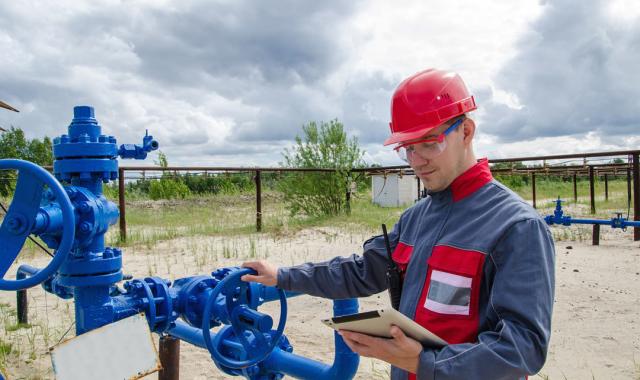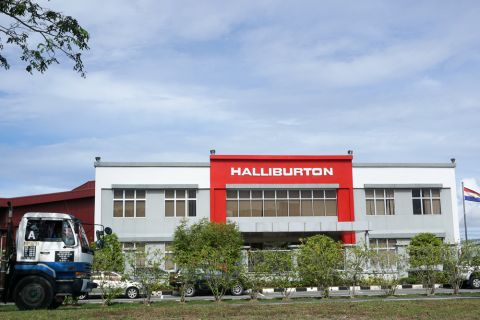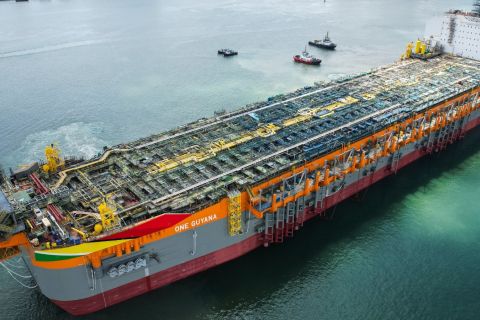
Automated data entry and real-time updates ensure all approved parties have the most up-to-date information. (Source: Seven Lakes Technologies)
A new wave of innovation is spreading across the world of energy. Buzzwords like artificial intelligence, Internet of Things and Big Data echo across every industry. The oil and gas industry has traditionally accepted a mostly manual capital planning process as a standard operating procedure, but the new age of efficiency brought about by cutting-edge capital planning is becoming too hard to ignore. And the new age of technology for business places collaboration and efficiency at the center of this revolution.
Digitalizing manual, paper-based systems provides unprecedented access to data for all stakeholders at any time from wherever they are. Automated data entry and real-time updates ensure all approved parties have the most up-to-date information. This enables them to make decisions with confidence while taking into account a wide variety of elements. These advances can significantly improve the interdependent work that often holds up the pace of operations.
Put intuitive systems to good use
Leading well management systems that standardize the well delivery processes and improve project success rates are vital to getting wells online. Automated software-asa- service (SaaS) platforms offer significant reductions in well delivery lead times and costs while supporting seamless cross-departmental collaboration and process visibility. Systems that are fully configurable and provide automated workflows for changing business needs can help streamline existing processes and reduce errors.
Intuitive systems provide configurable workflows from the time of setup to the delivery across restoration for various stakeholders. Additionally, a centralized webbased database allows companies to capture data, access it from anywhere and leverage it to automate tasks.
For example, automated systems, such as Seven Lakes Well Lifecycle Manager, provide alerts as tasks are due, create checklists to prevent activities from being missed inadvertently and provide data validation rules to ensure that captured data are of high quality.
If a team is going to construct a well site and they do it at the wrong location, it is very expensive to fix. With a system in place, there is a much more transparent process to bring wells online and on time.
Do away with fragmented data
Through the seamless collation of all information in one place, systems then become integrated for two-way communication with various third-party systems like well operations systems, authorization for expenditure (AFE) workflow software, and economics and reserves software. This eliminates the manual, duplicate data entry process, which is extremely error-prone.
Through better data quality and data integration, these well management systems support much faster decisions for pad drilling programs and offer alerts to reduce risks proactively. The systems are also extensible to address postdrill well life-cycle management processes such as plug and abandonment and workover. These types of cutting-edge SaaS platforms provide configurable analytics dashboards and reports for continuous process improvement.
Extension of visibility, collaboration
Visibility expands when process and analytics dashboards provide continuous monitoring and improvement. They can quickly identify problem areas and resolve bottlenecks. The end-to-end visibility holds stakeholders accountable for meetings with visible well delivery workflow updates. After all, users have to be able to see things to schedule appropriately. To move to the age of efficiency, companies must be able to see where the bottlenecks and delays derive from to get wells online promptly.
With more precise insights, companies can assign tasks with a visible audit trail of activities and attached documents, which are easily accessible online. It is much easier to figure out work progress, stats on well drilling and completion of jobs when data are easy to access. There is no need to dig through paper trails and the constant deluge of emails. Automated status updates (e.g., ones that report drill readiness status) can be instantly updated on the rig schedule when teammates complete prerequisites. Any automated system should have strong workflow support to make it as functional and user-friendly as possible. In time, these systematized well delivery processes ensure repeatable project success.
Less paper leads to more empowerment
Capital planning processes lie at the center of the problem and the solution. The antiquated reporting systems still common today are primarily manual and paper-based, thereby limiting data visibility and slowing the capital planning process in comparison to digital counterparts. Decision makers in these firms simply experience a lack of progress and do not understand the reasons for the bottleneck, at least not without a time-consuming investigation.
Giving a team the ability to report accurate, up-to-date information on the entire breadth of operations means fast, efficient decisions.
E&P operations that implement configurable, easy-to-use self-service dashboards are empowered to create forecast reports, project future production and allow better planning overall. Particularly for top management, proper reporting means they always have the pulse of the drilling and completions programs at their fingertips and they can easily anticipate issues and take corrective action.
Jump on the automation bandwagon
Planning for rig mobilization and demobilization eliminates permit and construction delays, improving efficiency. However, having confidence that a schedule is feasible and all scheduling constraints are accounted for is difficult.
A majority of oil and gas operations do not have insights into scheduling roadblocks or the ability to question reasons behind the schedule change of a drill. While spreadsheets have long been the status quo, companies are getting to a stage where they must integrate smart software that helps regulate constraints and create a feasible schedule, while also being agile in response to changes.
But a “schedule” doesn’t just mean straightforward start and end dates. It includes cues that flag violations of constraints such as not drilling and completing in proximity or respecting continuous drilling clause/obligation. Integrating systems that provide visual cues is the future of rig scheduling because it prevents costly mistakes and lost rig days.
Inefficient oilfield management simply has no place in the future. Oil and gas companies need collaborative solutions that serve up every scrap of data required to play AFEs, well delivery and rigs. Leading capital planning systems are providing exactly what the industry needs to get back on its feet: automated systems, quality data, visibility, reporting and scheduling.
Recommended Reading
Chevron’s Tengiz Oil Field Operations Start Up in Kazakhstan
2024-04-25 - The final phase of Chevron’s project will produce about 260,000 bbl/d.
Rhino Taps Halliburton for Namibia Well Work
2024-04-24 - Halliburton’s deepwater integrated multi-well construction contract for a block in the Orange Basin starts later this year.
Halliburton’s Low-key M&A Strategy Remains Unchanged
2024-04-23 - Halliburton CEO Jeff Miller says expected organic growth generates more shareholder value than following consolidation trends, such as chief rival SLB’s plans to buy ChampionX.
Deepwater Roundup 2024: Americas
2024-04-23 - The final part of Hart Energy E&P’s Deepwater Roundup focuses on projects coming online in the Americas from 2023 until the end of the decade.




